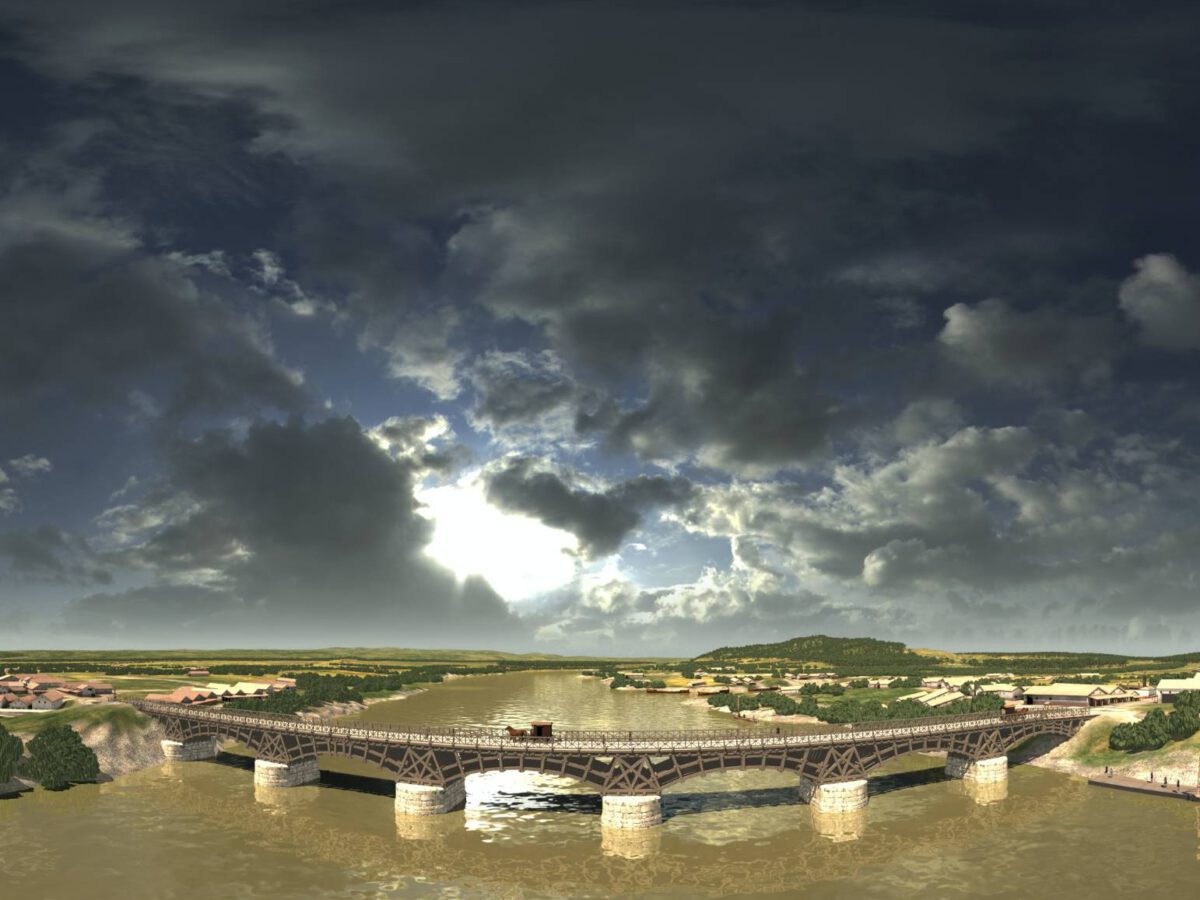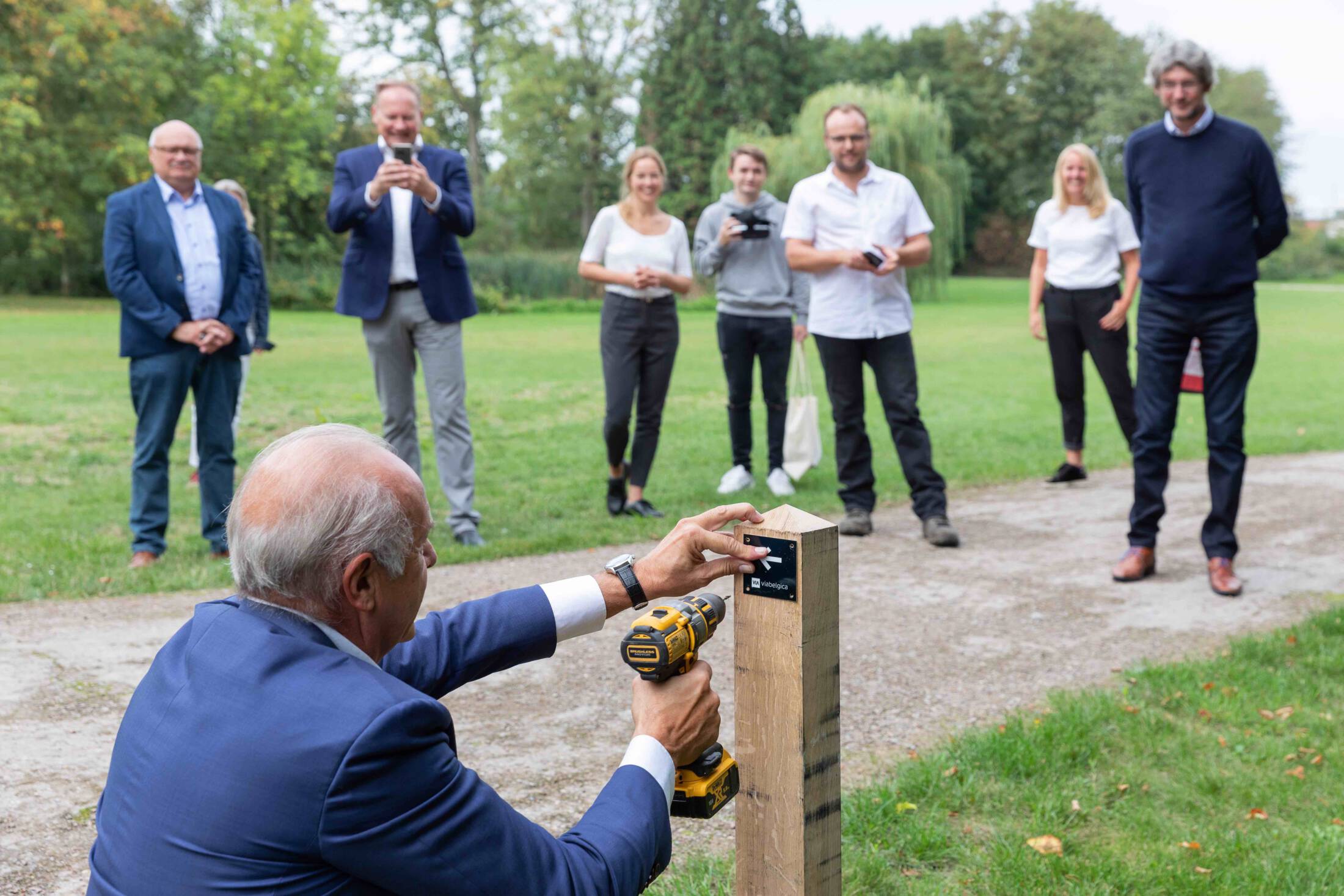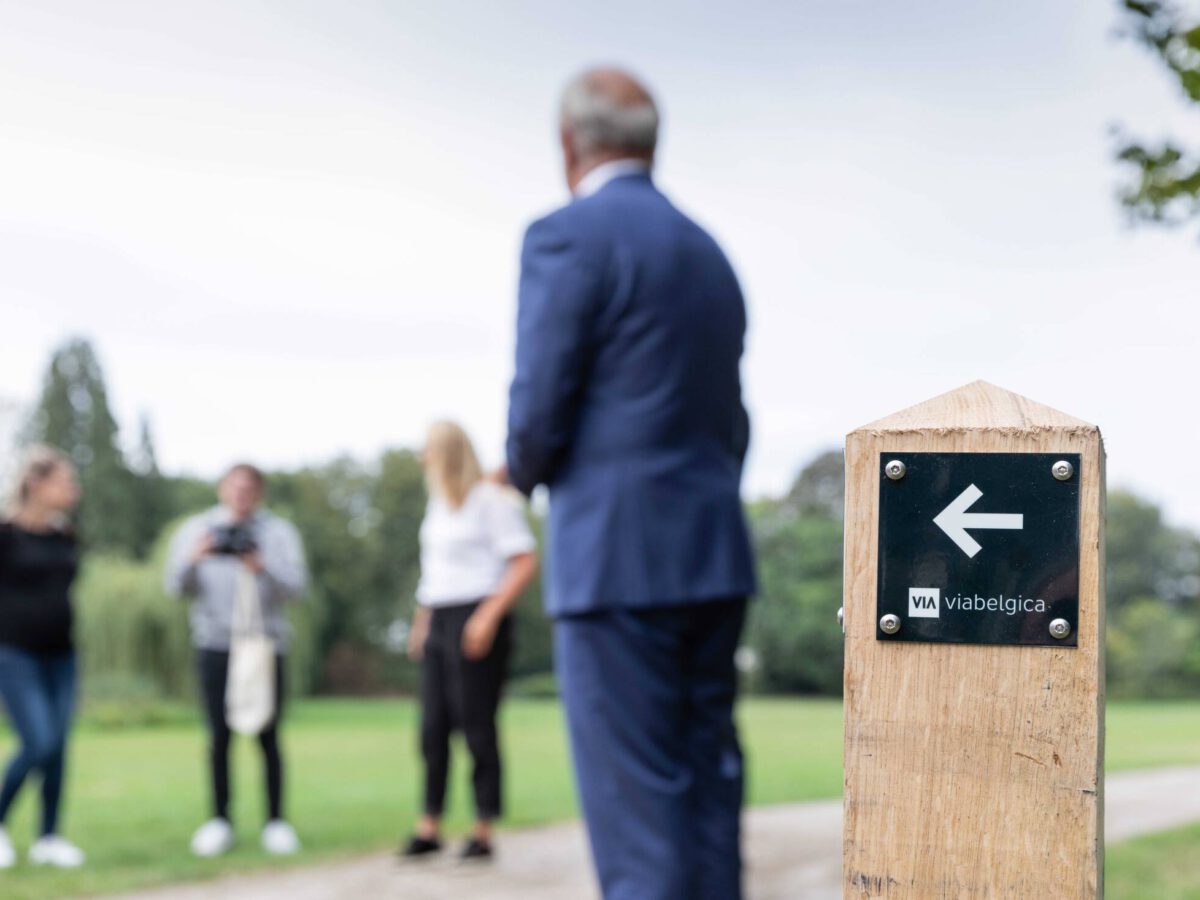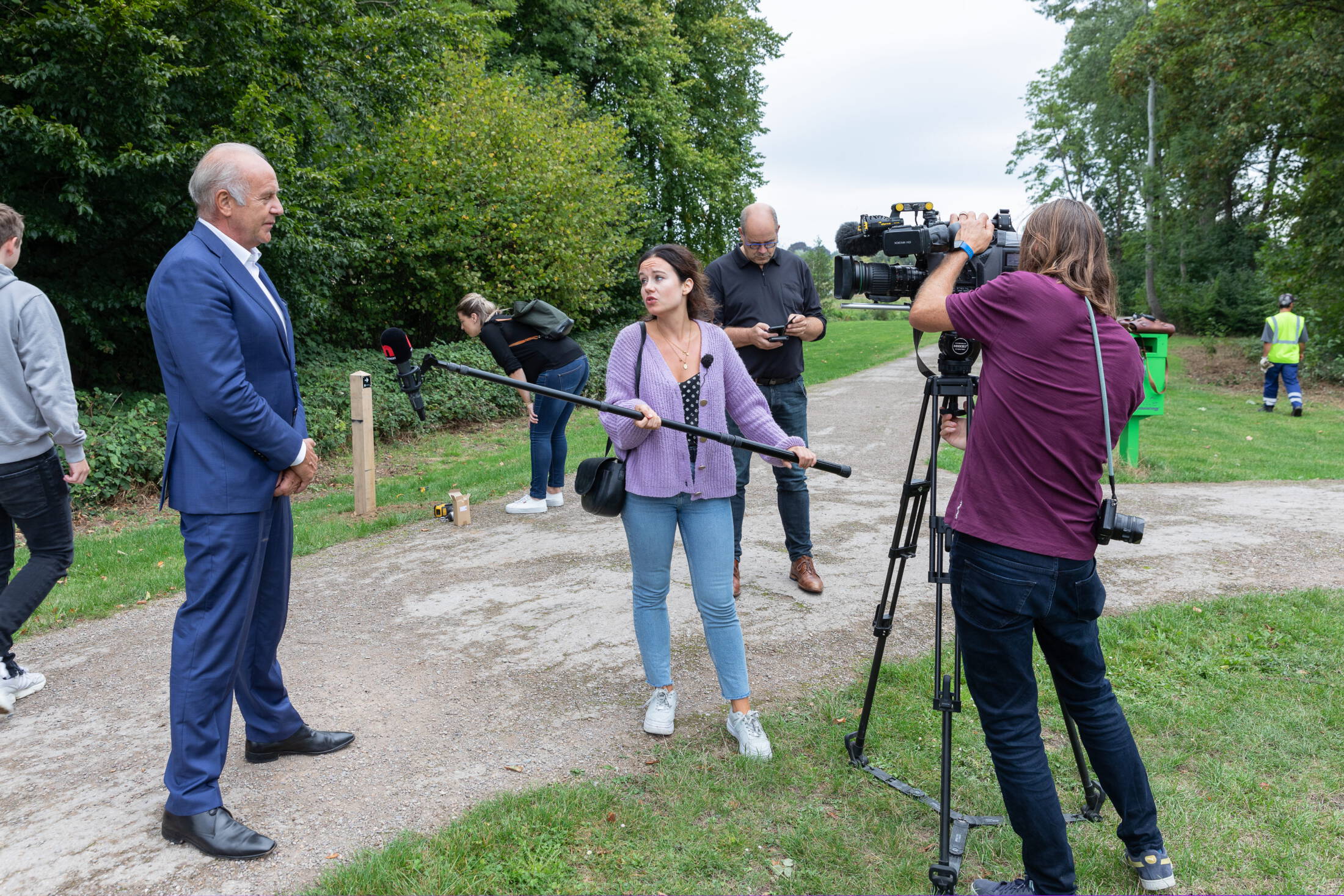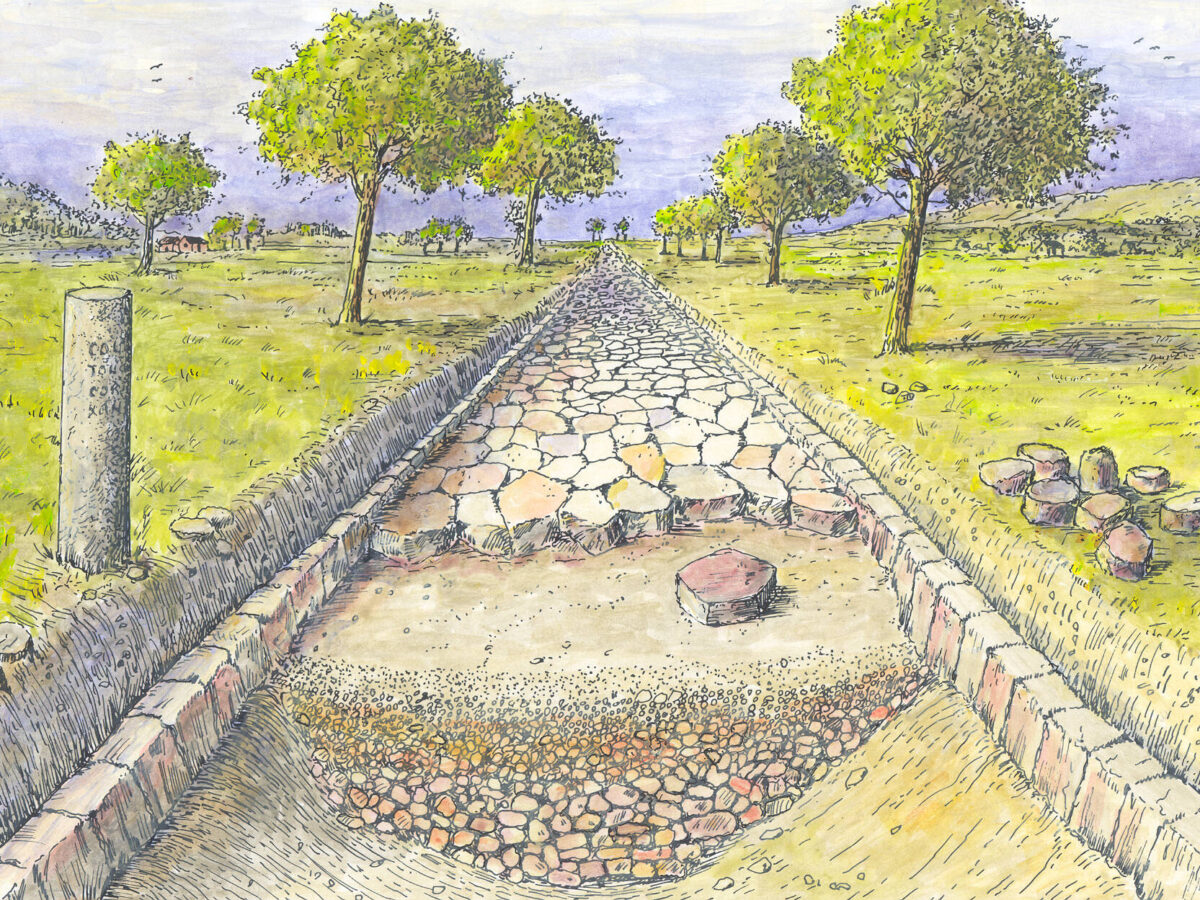Start of the Via Belgica waymarking
Author: Via Belgica
Photography: Via Belgica
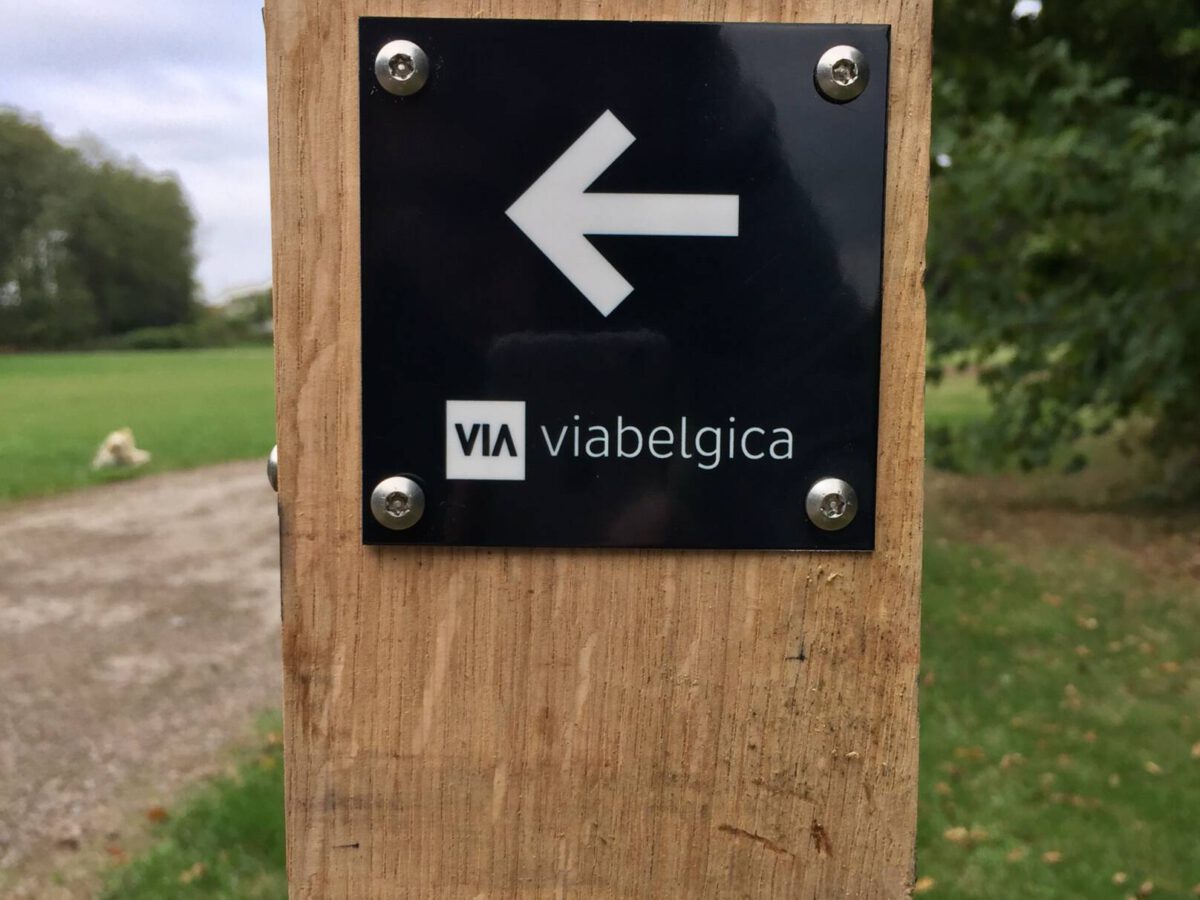
A long-cherished dream of many Via Belgica enthusiasts is coming true: the long-distance hiking route from Rimburg to Maastricht will be provided with route markers in cooperation with Routepunt. On 9 September, the chair of the Via Belgica steering committee, provincial executive member Ruud Burlet, drove the very first Via Belgica route post into the ground. In addition, the Roman bridge in Maastricht has been brought to life through Virtual Reality. More locations will follow in the near future.
The route markers along the Via Belgica long-distance hiking trail make the old Roman highway even more visible in the Limburg landscape. For the waymarking, the route was chosen that runs closest to the original course, while remaining attractive for hikers. “Just as centuries ago, the Via Belgica must once again open up, bring together and connect,” said provincial executive member Burlet.
“Just as centuries ago, the Via Belgica must once again open up, bring together and connect.”— Provincial executive member Burlet

Roman bridge in Virtual Reality
In most places, the Roman past is hidden from sight. Therefore, the Via Belgica is made visible in several locations using Virtual Reality. One of these places is the Roman bridge across the Meuse in Maastricht, about 100 metres from the current Sint Servaas Bridge. “It is of course difficult to imagine what the world of our ancestors looked like centuries ago, but the municipality of Maastricht does want to offer that experience,” says alderman Gert-Jan Krabbendam, responsible for archaeology. “By using technologies such as Virtual Reality, we make our past come alive again.”
The cradle of Maastricht
The Meuse was one of the few obstacles that the Romans had to overcome when constructing the Via Belgica. We may therefore regard the Roman bridge as the cradle of Maastricht, because without the need for a permanent river crossing, the Romans would never have founded the town. The remains of the bridge were first discovered in 1964 during dredging work in the Meuse. The remains under water are now a listed archaeological monument, fully visible in all its glory on the Via Belgica website. The presentation takes viewers on a bird’s-eye flight over the Roman bridge and shows how the Romans built it. View it here!
